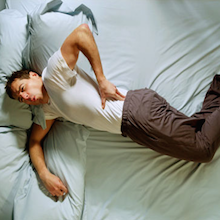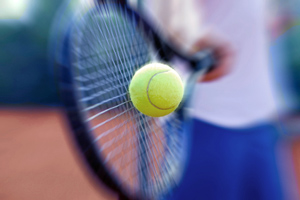Being a Physical Therapist I am always being asked by people outside of the clinic about their various injuries and what are some quick remedies to prevent or fix pesky injuries. These questions come from everywhere including friends, family and for some reason lately Uber drivers. At the top of that list is, “I have terrible knees what do I need to do to fix that?” Often when people ask these questions they say they have tried everything which includes all the commonly known treatments. Treatments that people see on the professional sports field, on TV or ideas they have heard from friends and family. These usually consist of ice, heat, multiple braces, intricate taping methods and my favorite, tiger balm slathered all over the knee. The usual responses following the use of these “quick fixes,” is each one works for the short term, but eventually the knee pain or instability returns. These methods seem like the best idea because they are addressing the area where the pain/instability is. It is instinctual to think that if you are having pain in a certain area that’s where the problem is right? Unfortunately on average this not the case and is the reason treating that knee is only temporarily effective.
This is what I want to address in this article. Often in the human body, we develop pain in a certain area, but the actual source of the problem is not even close to the pain. This can be true anywhere in the body and I find commonly occurs in the knee. Understandably this concept isn’t always easy to grasp, but I will try to illustrate why this happens. I’m here to defend the knee, because it may not be to blame, it may actually be the victim in this situation. Like many of us may have experienced in work or school during group projects the people that are slacking have no complaints but the ones getting overworked you hear all the complaining from.
I will start with an example to help demonstrate this. A 2nd overall NFL draft pick during a game plants his foot just prior to making a cut, feels a pop in the knee. That player has an MRI revealing an ACL tear, inherently the knee is to blame, Right? That’s where the injury occurred and it’s the weak ACLs fault, Right? Not necessarily. When it comes to lower extremity body mechanics, a lot of elements come into play. The trunk, hip, knee, ankle, and foot all are involved during any weight-bearing activity. If any one of these areas has any dysfunction it will cause added stress on the remaining body parts. For instance, in this example of the football player, the player may have poor hip strength resulting in their leg collapsing in a valgus force (knee bending inward), as seen in this picture, causing added stress across the knee joint eventually tearing the ACL.
(And we are all surprised that RG III tore his ACL)
This is just one of many examples of the lower chain (hip, knee, ankle) failing and causing added stress across the knee joint. There are severe common factors that can cause stress across the knee joint which I will mention in a little bit. Another reason the knee is so susceptible is that the hip and the ankle/foot complex are both multi-planer joints. This means these two joints can move in multiple different directions allowing them to compensate more easily if there are any dysfunctions in the lower chain. The knee, on the other hand, is mostly a 1 plane joint. Which means it is only moving in flexion and extension. The restriction of the 1 plane decreases the ability of the knee to compensate for deviations in other parts of the lower chain. Since it is unable to compensate this is why you develop pain or injury in the knee when there was actually nothing wrong in the knee.
Now I will briefly give examples of common problems that cause knee pain. I will be very brief cause if I were to go into detail this could turn into a book. This is why it is important to contact a medical professional (doctor, physical therapist or athletic trainer) if you are experiencing severe knee pain and not try and fix it yourself. Here are a few common examples with a brief explanation:
-
Flat feet: This is when your foot overpronates causing your arch to drop excessively when bearing weight on that leg.
-
Weak hip abductor muscles (ie gluteus medius): This is the example I talked about earlier weak hip muscle may cause your knee to enter more valgus force.
-
Large Q-angle: The Q-angle is the approximate angle from your hip to the center of knee to the ankle.
-
Decreased ankle Dorsiflexion: Ankle dorsiflexion is when you flex your ankle to bring your toes towards your knee.
-
Decreased core strength: inability to appropriately control trunk over the lower extremities during dynamic activity.
Again these are only a few common causes that can cause knee pain or injury. This is not an all-inclusive list and is not meant to diagnose knee pain. So next time you or a friend experience knee pain, instead of blasting your knee with treatment, try to look for other suspects that could be the real source of the problem.



